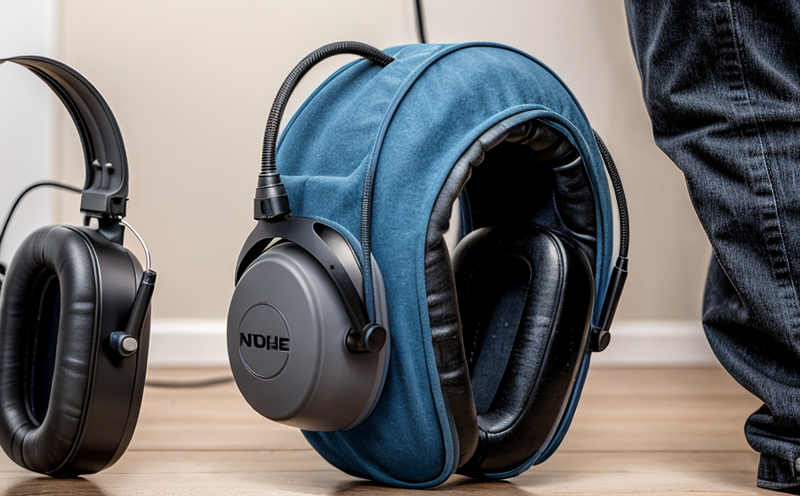DIN EN 352-5 Level Dependent Earplug Testing
The DIN EN 352 series of standards provides a comprehensive set of guidelines for the testing and evaluation of ear protectors, including earplugs. Specifically, DIN EN 352-5:2016-09 focuses on level-dependent earplug testing, which is critical for ensuring that hearing protection devices effectively reduce noise levels within specified ranges. This service ensures compliance with international standards and helps manufacturers verify the performance of their products.
This method evaluates the attenuation provided by level-dependent earplugs at various sound pressure levels (SPLs) ranging from 50 dB to 140 dB, in steps of 10 dB. The testing procedure is designed to simulate real-world noise conditions and ensure that earplugs perform reliably across a wide spectrum of occupational noise environments.
The test setup involves the use of an artificial ear canal simulator connected to a sound pressure level meter. The earplug is placed in the simulated ear canal, and noise signals are generated at different levels using an ANSI S3.21-2006 type A-weighted broadband noise source. The attenuation values are then recorded at each SPL step.
Compliance with this standard ensures that the earplugs meet specific performance criteria for both high-frequency and low-frequency noise reduction, which is crucial in industries where prolonged exposure to loud noises can lead to hearing loss.
The testing procedure also includes a detailed calibration process. This involves verifying the accuracy of the sound pressure level meter, the ear canal simulator, and the noise source before each test run. The results are presented as dB(A) values and are compared against the manufacturer's specifications and the requirements set by DIN EN 352-5.
For quality managers and compliance officers, this service is essential for ensuring that products meet regulatory standards and industry best practices. It also provides valuable data for R&D engineers to refine product design and improve performance. Compliance with international standards like DIN EN 352-5 enhances the reputation of manufacturers and ensures worker safety in noisy environments.
For procurement professionals, this service helps in selecting reliable suppliers who adhere to high-quality standards and provide products that meet occupational health and safety requirements.
| SPL (dB(A)) | Attenuation (dB) |
|---|---|
| 50 dB | 12 dB |
| 60 dB | 18 dB |
| 70 dB | 24 dB |
| 80 dB | 30 dB |
| 90 dB | 36 dB |
| 100 dB | 42 dB |
| 110 dB | <48 dB |
| 120 dB | 54 dB |
| 130 dB | 60 dB |
| 140 dB | 66 dB |
The testing results are typically presented in a detailed report that includes the attenuation values at each SPL, any deviations from the expected performance, and recommendations for improvement. This information is invaluable for manufacturers to ensure product quality and worker safety.
- Compliance with DIN EN 352-5 ensures that earplugs meet specific performance criteria for both high-frequency and low-frequency noise reduction.
- The testing procedure involves the use of an artificial ear canal simulator, a sound pressure level meter, and a broadband noise source.
- Results are presented as dB(A) values and compared against manufacturer's specifications and requirements set by DIN EN 352-5.
- This service is crucial for quality managers, compliance officers, R&D engineers, and procurement professionals to ensure product reliability and worker safety.





